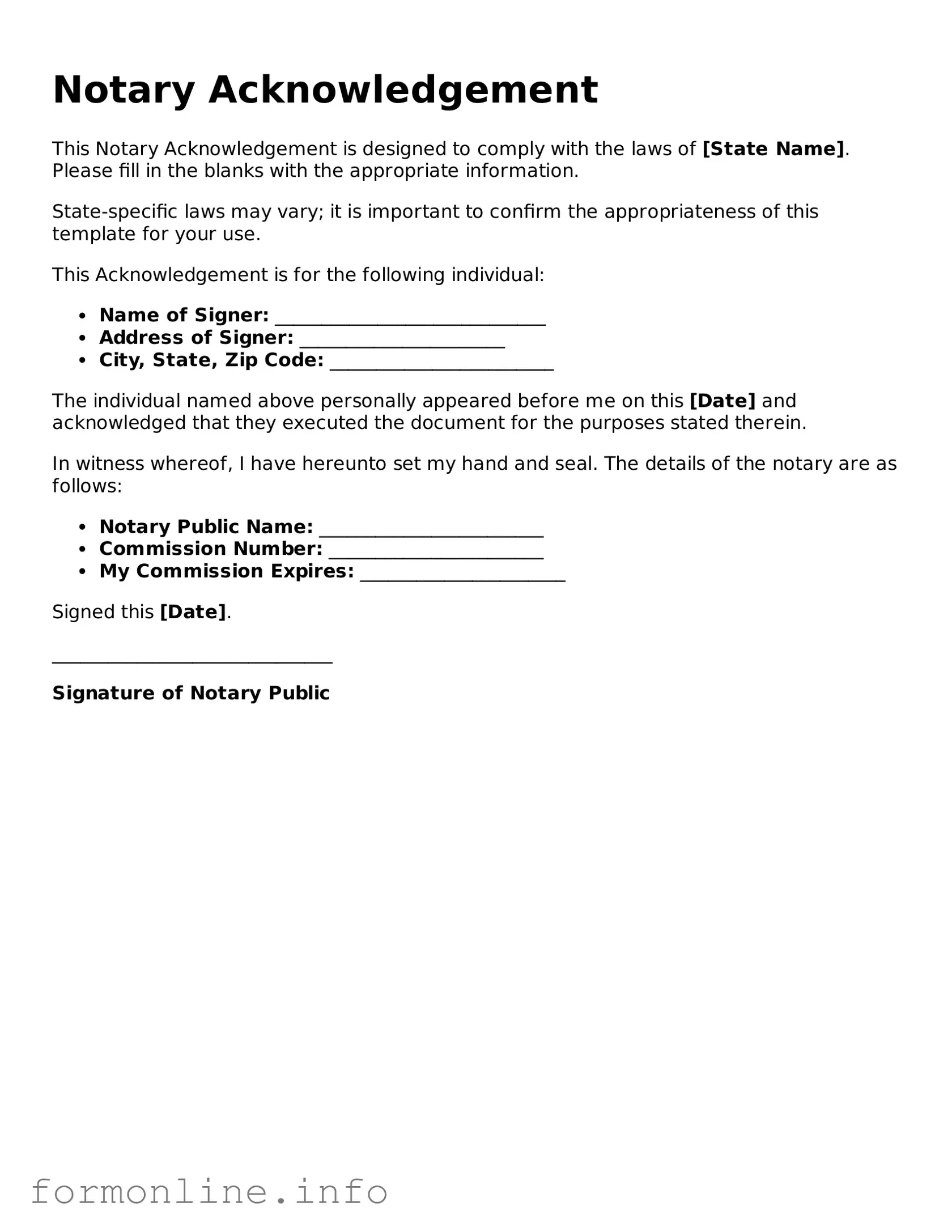The Affidavit is a written statement confirmed by oath or affirmation. Like a Notary Acknowledgment, it serves as a way to verify the identity of the signer. Both documents require the presence of a notary public, who confirms that the individual signing the document is who they claim to be. This process adds a layer of authenticity and trustworthiness to the information provided.
A Power of Attorney (POA) grants one person the authority to act on behalf of another. Similar to a Notary Acknowledgment, a POA often requires notarization to ensure that the principal's identity is verified. This helps to prevent fraud and ensures that the person granting authority is doing so willingly and knowingly.
A Deed is a legal document that conveys property ownership. Like a Notary Acknowledgment, a deed must be signed in the presence of a notary public. This requirement serves to validate the signatures and confirm that the parties involved understand the implications of the transfer of ownership.
An Employment Contract outlines the terms of employment between an employer and employee. While not always required, having a notarized contract can add an extra layer of credibility. Similar to a Notary Acknowledgment, the notarization process confirms the identities of the parties involved and their understanding of the contract terms.
A Bill of Sale transfers ownership of personal property from one party to another. This document may also be notarized to provide proof of the transaction. Just as with a Notary Acknowledgment, the notary public verifies the identities of the parties and ensures that the transaction is conducted fairly and transparently.
A Living Will is a document that outlines an individual's wishes regarding medical treatment in case they become unable to communicate. While notarization is not always required, having it notarized can enhance its validity. Like a Notary Acknowledgment, this document involves confirming the identity of the person making the declaration, ensuring that their wishes are honored.
A Trust Agreement establishes a trust and outlines the terms under which it operates. Notarization may be required to ensure that the individuals involved are properly identified. This is similar to a Notary Acknowledgment, where the notary serves to validate the identities and intentions of the parties, ensuring that the trust is established according to the grantor's wishes.
A Lease Agreement is a contract between a landlord and tenant. While notarization is not always necessary, having it notarized can provide additional security for both parties. This process is akin to a Notary Acknowledgment, as it ensures that both parties are properly identified and that they fully understand the terms of the lease.
In the context of legal documentation, it is paramount to ensure all forms are completed accurately and submitted promptly, which is why understanding forms like the WC-1 Georgia form is essential. For more information regarding this crucial document and its requirements, you can visit georgiapdf.com, where employers can access the necessary resources to guide them through the process effectively.
A Consent Form is often used in various contexts, such as medical treatment or participation in research. Notarization may not be required, but it can enhance the document's legitimacy. Like a Notary Acknowledgment, it involves verifying the identity of the signer, ensuring that consent is given freely and with full understanding of what is being consented to.
